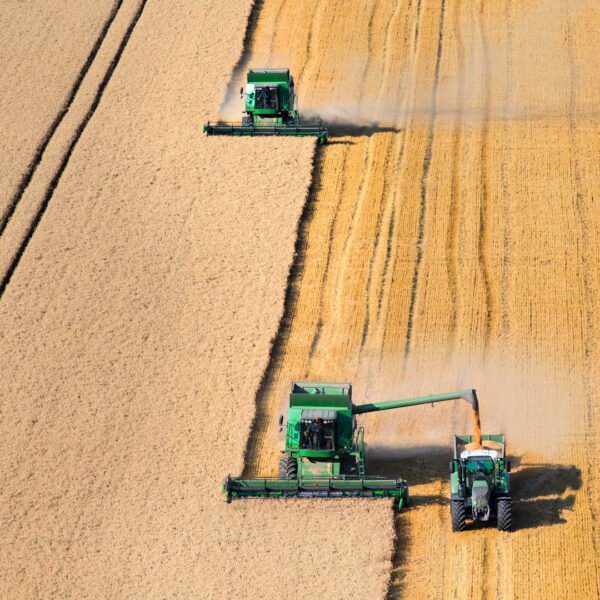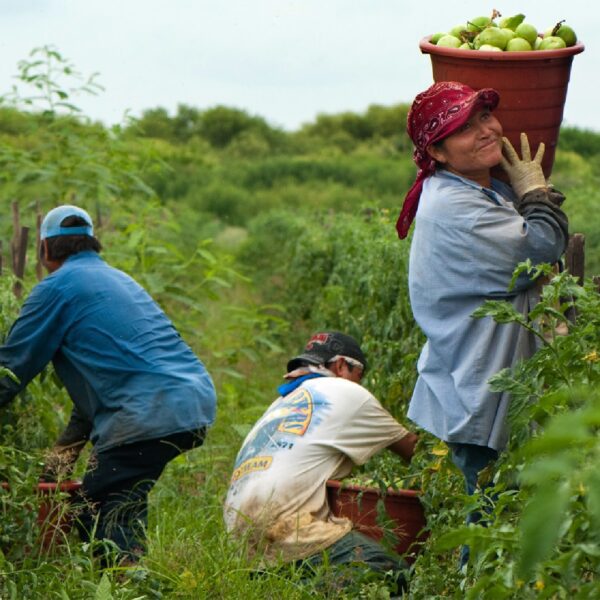Celebrating Farm Workers
 Farm Workers Put Food on Our Tables
Farm Workers Put Food on Our Tables
As consumers, while we are aware of the availability of all kinds of products in our supermarkets, we are often disconnected from where our food comes from and how much happens behind the scenes to get it on our tables. One result of the pandemic and associated shut-downs is that it shone a light on essential workers, reminding us how important they are to our daily lives. Some of the workers most essential to life in the USA are farm workers.
What Do Farm Workers Do?
Farm workers are the folks responsible for nearly every stage of creating the natural things that become our food, including grains, fruits, vegetables, nuts, legumes, eggs, dairy, and animal food sources. Advancements in agricultural technology have brought about an increased use of mechanical operations, but many crops are too delicate for machinery and must be picked by hand. Farm worker’s work is relentless, physically exhausting, and often potentially dangerous.
Here is a (very!) non-exhaustive list of the work farm workers do:
- Plant, fertilize, prune, irrigate, and harvest crops
- Pack and load harvested crops for shipment
- Care for live animals, including cattle, sheep, pigs, goats, poultry, and bees
- Feed, herd, weigh, and load animals
- They’re also often responsible for keeping health and vaccination records for the animals they tend to
- Build and repair fencing
- Clean and maintain animal housing
- Operate heavy, sometimes dangerous machinery
- And so much more!
Working Conditions
While many of us enjoy a more relaxed lifestyle in the summer months, farm workers, like all seasonal workers, work long hours in the height of summer: 12+ hour days, 6 – 7 days a week, rising before the sun and often working well past sundown. To make matters worse, climate change has created record-breaking heat waves, requiring farmers to monitor the heat index to ensure workers aren’t exposed to potential health threats like heat stroke. Additionally, excess rain and flooding means the farms become inaccessible, and workers aren’t paid unless they can work. Many consumers also expect perfect-looking produce, which causes farm workers to be exposed to harmful pesticides in order to prevent insects and worms from marring the produce. In California, where the majority of certain US grown nuts are farmed, wildfires expose workers to harmful levels of smoke.
Because most farm worker positions are wage-work, most farm workers are also forced to “migrate” with the seasons to follow the work from south to north and back again. This makes life extremely hard for their families.
Labor Shortages
With low pay, long hours, and physically challenging work, is it any wonder that US farmers are currently facing a chronic labor shortage? Due to the labor shortage, sometimes crops are left withering in the fields because there are not enough workers to harvest them. This results in food waste and costs millions of dollars in lost production. As consumers, we expect low food prices and a year-round variety of fruits and vegetables. At the grocery store, you may have noticed a rise in the number of fruits and vegetables being imported from foreign countries, where labor is cheaper and the climate is more conducive to growing. If farmers can’t find enough US-born workers to hire, they must rely on foreign-born workers to subsidize.
The Future of Farm Work

Conditions are improving for farm workers including better pay and benefits, and farmers identifying creative ways to keep workers year-round. Currently the average age of a farmer is 60 and over. Many of their children have opted to seek opportunities off the farm and succession plans are hard to identify. To ensure a reliable and consistent national food system, we’ll need the next generation to be involved in agriculture. Improvements in agricultural education, especially in rural areas where kids see successful farms, make it something to aspire to.
Take some time to talk to a farm worker and they’ll tell you that despite the long hours and hard work, they find their work very rewarding. They enjoy their freedom, being outside in nature, their love for animals, seeing immediate results of their hard work, and camaraderie. For small family farms, farm workers are part of the family.
 Farm Workers Put Food on Our Tables
Farm Workers Put Food on Our Tables

